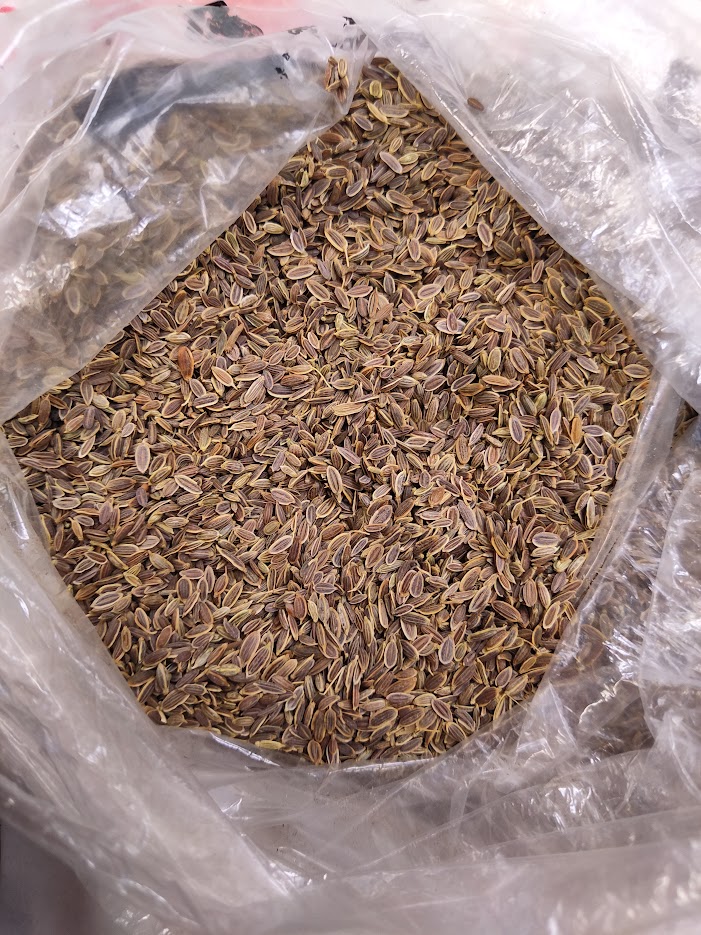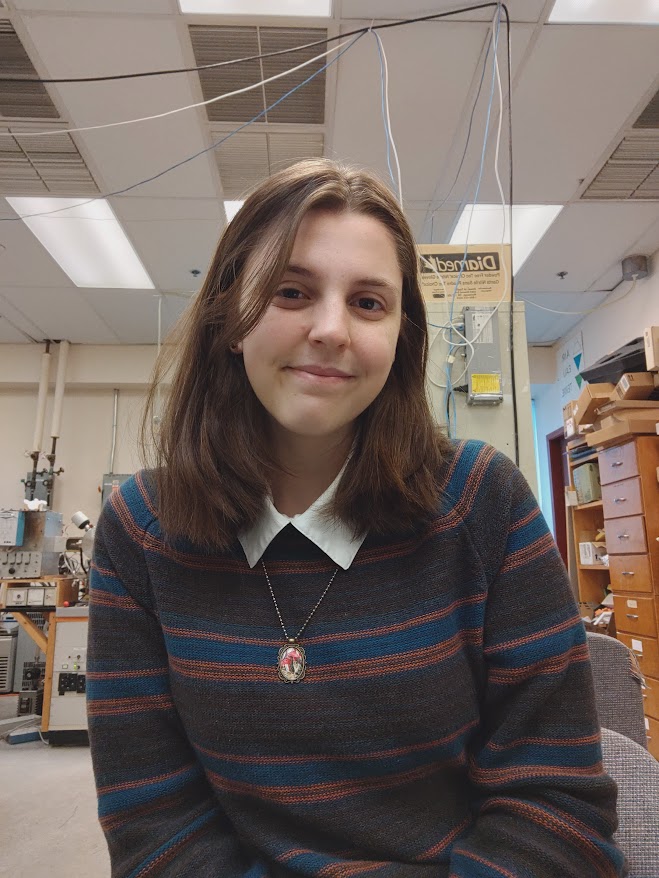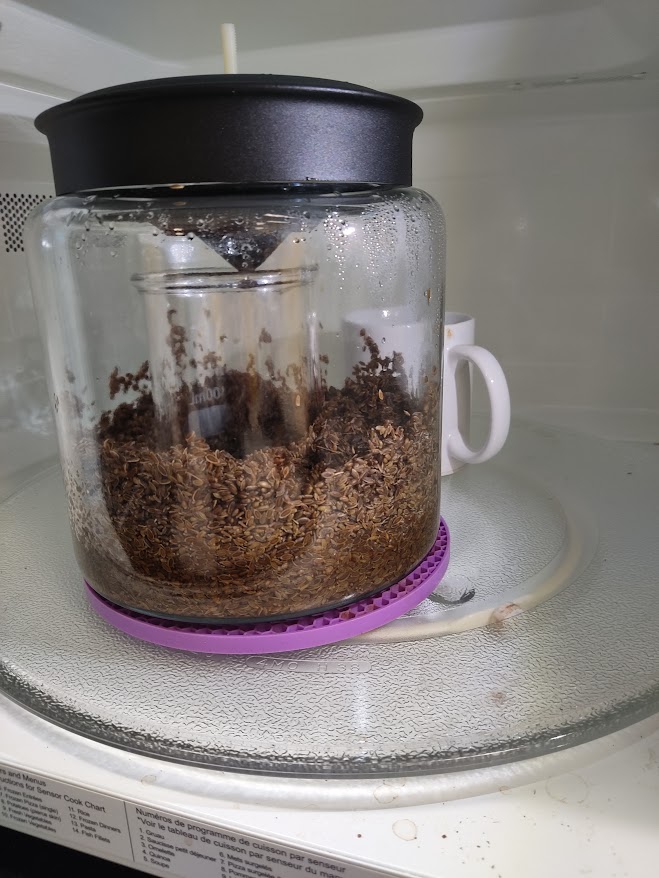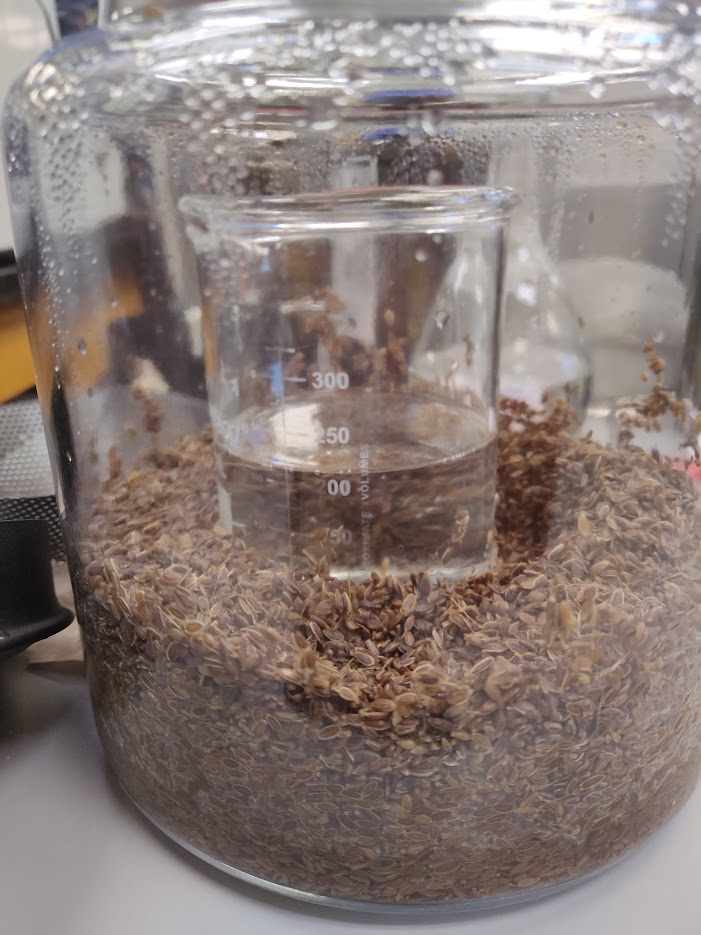
Dill Seed Hydrosol
The fruit of the dill plant, known as dill seed, is a common spice used in the preparation of soups, sauces, marinades, and dips. They have a light but pungent flavour that is similar to caraway, though is still reminiscent of its leafy counterpart, dill weed.

Nowadays, it is mostly used in cooking, however dill seeds have a long history as a medicinal plant. Dill seeds are listed as an ingredient of a painkiller in the Ebers Papyrus, an ancient Egyptian medical text dating back to 1500 BCE. The seeds were also mentioned later by Dioscorides, a Greek physician, who wrote that, when scorched, the seeds were useful in the healing of wounds. In early Europe they were called "meetinghouse seeds", because they were frequently chewed during long church services to freshen breath and keep attendees awake. Perhaps most famously, dill is a common ingredient in gripe water, which is still used today to soothe colicky infants. As is evident, dill seeds have a long-lived reputation as a soothing plant. Even the name "dill" comes from the Norse word "dilla", which means to calm or to soothe. [i]
[i]The Herb Society of America’s Essential Guide to Dill. (n.d.).

I’m Rose Anderson-Duvall, an USRA student working in the J. L. Holmes Mass Spectrometry Facility in summer 2023. I am an undergraduate student entering my third year of Biopharmaceutical Science at
uOttawa. My mother instilled a love of science in me when I was very young, and I never grew out of it. Studying hydrosols is, among many other things, a brilliant insight into the metabolites of plants, a perfect intersection between my two passions, biology and organic chemistry.
Working in this laboratory, I’ve learned how to analyze, identify, and quantify compounds
using the GC-MS in addition to learning various extraction techniques for making hydrosols.

Creation of Dill Seed Hydrosol
The dill seed hydrosol was created using the microwave extraction method. 300g of dill seed were put into a microwave extraction vessel with 0.5L of boiling distilled water. The seeds were left to steep in the water overnight. The next day, a 300mL beaker was placed in the middle of the microwave vessel. An ice cone was then screwed onto the lid of it, and the entire vessel was placed into a normal microwave, along with a microwave safe mug filled with cold water. The microwave was set to run for a period of nine minutes. During this time, the water in the dill seeds will boil off, taking the volatile compounds in the seeds with it, hit the ice cone, condense, and fall into the beaker into the middle of the vessel. After the 9 minutes is up, the vessel is removed from the microwave and the hydrosol in the beaker is collected. The beaker is then replaced and a new ice cone is fitted to the vessel lid, at which point the process repeats. This is done 4 times to ensure all the volatile components are extracted.

Analysis of Hydrosol
The collected hydrosol was then run through SPE (solid phase extraction) to prepare it for GC/MS analysis. This is done to remove the water from the hydrosol, as well as remove any large impurities which would get stuck in the column of the GC. A 1mL sample of hydrosol was then run through the GC/MS in order to identify and quantify the compounds within it.

Each peak from the chromatogram was identified by comparing its mass spectrum to a database. Their identities were confirmed by comparing the calculated RI values to the RI values listed for the compound in the literature.[ii]
[ii]
1,3-Benzodioxole, 4,5-dimethoxy-6-(2-propenyl)-. (n.d.). Retrieved May 24, 2023, from https://webbook.nist.gov/cgi/cbook.cgi?ID=C484311&Mask=2000#Gas-Chrom
Carvone. (n.d.). Retrieved May 24, 2023, from https://webbook.nist.gov/cgi/cbook.cgi?ID=C99490&Units=SI
cis-Dihydrocarvone. (n.d.). Retrieved May 24, 2023, from https://webbook.nist.gov/cgi/cbook.cgi?ID=C3792538&Mask=2000#Gas-Chrom
Cyclohexanone, 2-methyl-5-(1-methylethenyl)-, trans-. (n.d.). Retrieved May 24, 2023, from https://webbook.nist.gov/cgi/cbook.cgi?ID=C5948049
Z-dihydrocarvone - Kovats Retention Index. (n.d.). Retrieved May 24, 2023, from https://www.pherobase.com/database/kovats/kovats-detail-Z-dihydrocarvone.php
Conclusion
Of the four major components in dill seed hydrosol, three are carvone or carvone related. Carvone itself is present in the highest concentration in the dill hydrosol, at 0.2g/L. This makes sense as dill seed is known to have a similar flavour and scent to caraway, of which S-(+)-carvone is the major component. Furthermore, this indicates which stereoisomer of carvone is present in the dill hydrosol, as it smells like caraway (which has S-(+)-carvone) while the smell of spearmint would indicate the other isomer.
